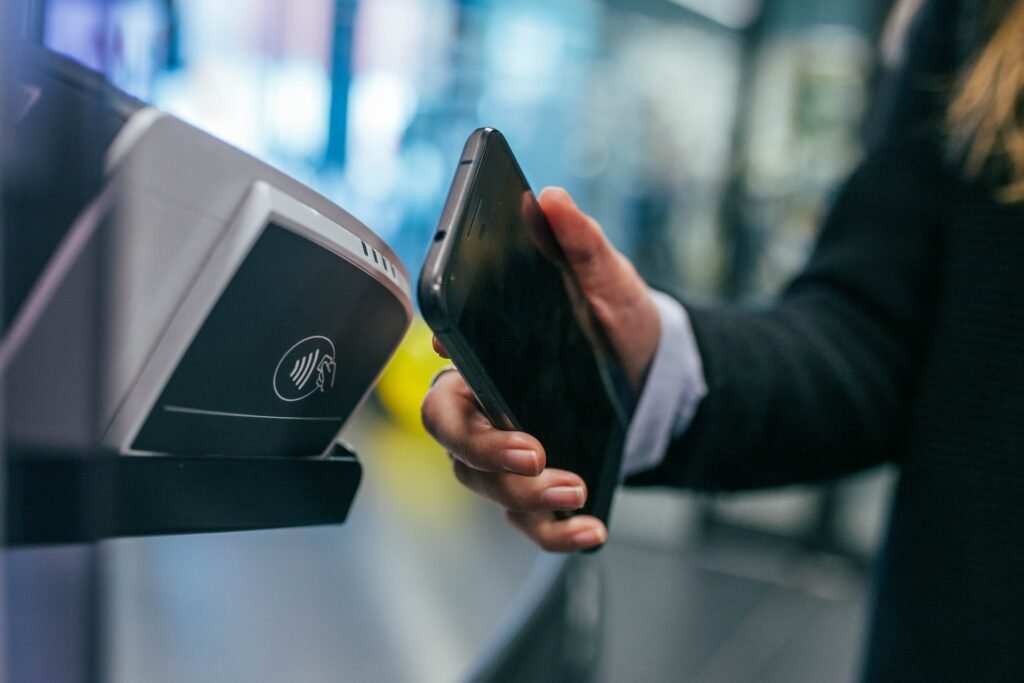In the digital market, trust is key. You click “Buy Now” and expect your data to stay safe. That’s why we choose big e-commerce names like Amazon, eBay, and Alibaba. It’s not just the products or deals, it’s the trust.
For these big players, every sale is a trust vote. They know a single data breach can harm their reputation and lose customers. So, protecting customer data is a top business strategy.
How do these platforms keep your data safe with millions of transactions every day? In this article, we’ll look at the advanced techniques and latest technologies used by e-commerce leaders to secure customer data in the cloud. Let’s discover the digital safeguards that keep your data secure!
Encryption Strategies in E-commerce Security
Encryption, the invisible shield that turns your sensitive data into a scrambled mix of characters. It’s like a secret code that only your computer and the e-commerce site can crack. But here’s something you might not know: not all encryption is the same. While most of us recognize the padlock symbol on our browser, signaling a secure connection, there’s a whole world of encryption details that often go unnoticed by the average shopper.
Now, let’s consider our e-commerce leaders. Would they be content with just the basic encryption protocols? Not at all! They’re playing a different game. These platforms deal with a huge amount of data every day, from credit card details to personal addresses. It’s not just about blocking external threats; sometimes, they need to maintain data integrity from internal issues.
Top e-commerce platforms like Amazon and Alibaba use advanced encryption methods, going beyond the standard SSL/TLS protocols. They use methods like end-to-end encryption, making sure that data stays encrypted not just when it’s being sent but also when it’s stored in their databases. Plus, they often use multi-layered encryption, which is like having a safe inside a safe. So even if a hacker somehow breaks one layer, they’re faced with another equally tough challenge.
But why go to all this trouble, you might ask? It’s simple. For these platforms, your trust is crucial. Every encrypted byte and bit is a sign of their dedication to protecting your data. After all, in e-commerce, trust isn’t just earned; it’s encrypted!
Extra Security with Multi-Factor Authentication
Have you ever double-checked if your door was locked? That’s what Multi-Factor Authentication (MFA) does for your online accounts. It’s an added layer of security, making sure that even if someone knows your password, they can’t access your account without passing another checkpoint. In the broad digital field of e-commerce, where cyber threats are everywhere, MFA has become the unsung hero, the watchful guard that keeps intruders out.
Think about the huge number of transactions and user accounts on platforms like eBay or Shopify. The stakes are incredibly high. A single breach could put the personal and financial information of millions at risk. This is where MFA comes in, acting as the strong second line of defense. Instead of just relying on a password, users are asked to provide another piece of evidence – it could be a fingerprint, a one-time code sent to their phone, or even facial recognition.
Top e-commerce platforms have quickly seen the value of MFA. Amazon, for example, offers its users the option to enable Two-Step Verification, adding an extra layer of security to their accounts. Similarly, platforms like Etsy and WooCommerce have integrated MFA options, making sure that users’ accounts stay protected against potential breaches.
But here’s the thing: as cyber threats evolve, so does the need for stronger security measures. And while MFA acts as a strong barrier, the e-commerce world is preparing for an even more advanced security model. Welcome to the world of Zero Trust Architecture, a model that operates on a simple principle: Trust no one, verify everyone. But what does that mean for e-commerce leaders, and how are they integrating these principles?
Embracing Zero Trust Architecture in E-commerce
In cybersecurity, one phrase is getting louder: “Zero Trust”. But what does it really mean? Imagine this: Instead of blindly trusting anyone inside or outside the organization, every access request is thoroughly checked. It’s like a nightclub bouncer who doesn’t let anyone in, not even regulars, without checking their ID every time.
The Zero Trust model believes that threats can come from anywhere – from external hackers or even insiders. In the old security model, once you were inside the network, you generally had free reign. Zero Trust changes this. It assumes that the threat is already inside, and so, every request is treated as if it’s coming from an untrusted source.
Now, let’s consider e-commerce. With the huge amount of sensitive data they handle, platforms like Amazon, Alibaba, and eBay can’t afford to take risks. They’re leading the way in adopting Zero Trust principles. For example, instead of granting wide access, permissions are now very specific. Access to data is on a need-to-know basis, and every request is continuously authenticated and authorized. Plus, with the use of micro-segmentation, these platforms make sure that even if a hacker gets in, they can’t move around the network.
But as we move further into the digital age, the line between man and machine is blurring. With the rise of AI and machine learning, e-commerce leaders are preparing for a future where security is not just reactive but predictive. Imagine a system that can predict threats before they happen. Interested?
AI and Machine Learning: The Future of E-commerce Security
As we move through the digital age, cybersecurity challenges change, but so do the tools we use to fight them. Here come AI and Machine Learning, the powerful pair that’s changing how e-commerce platforms protect their data.
AI, with its ability to process huge amounts of information quickly, is like the Sherlock Holmes of cybersecurity. It doesn’t just react to threats; it predicts them. By analyzing patterns and unusual activity in data traffic, AI can spot potential threats even before they happen. It’s like having a security guard who doesn’t just catch the thief but anticipates the theft.
Let’s look at some real examples. Amazon, with its massive data sets, uses machine learning algorithms to spot fraudulent purchase activities in real-time. Alibaba uses AI-driven models to monitor its network, identifying and dealing with threats instantly. eBay’s AI-powered systems learn from the platform’s interactions, making their defense mechanisms smarter and stronger every day.
But while AI and Machine Learning are powerful tools, they’re just one part of the solution. As the saying goes, “Don’t put all your eggs in one basket.” E-commerce platforms are using a range of defense strategies. One method that’s becoming popular is data masking and tokenization. Interested in how these methods turn raw data into codes that can’t be understood, making sure that even if hackers get their hands on it, it’s of no use?
Keeping Real Data Hidden with Data Masking and Tokenization
In the fast-paced world of e-commerce, where transactions happen every second, keeping sensitive data confidential is crucial. Imagine a world where every piece of data, once accessed, reveals nothing of its original content. Sounds like a dream for data security, right? This is where data masking and tokenization come in.
Data masking is like a clever disguise. It changes original data into a modified version, making sure that the real data stays hidden, yet structurally similar. For example, your credit card number might look like “XXXX-XXXX-XXXX-1234” – the real data is there, but it’s hidden from anyone who might be looking.
Tokenization, on the other hand, is like a secret agent’s code language. It replaces sensitive data with unique symbols or ‘tokens’ that have no meaningful value on their own. So, even if a hacker intercepts these tokens, they won’t be able to understand the actual data behind them. It’s a bit like having a treasure map, but without the key to decode it.
Major e-commerce platforms like Shopify and WooCommerce use these techniques to make sure that customer data, especially payment details, stay secure. By using data masking and tokenization, they make sure that even if there’s a data breach, the information accessed is useless to cybercriminals.
But, while these techniques are powerful, they’re just part of a complete security strategy. Think of them as the walls and moats of a fortress. But what about the regular checks to make sure that these defenses stay strong? That’s where regular security audits come in, acting as the regular health checks of the digital world. Ready to learn how top e-commerce platforms make sure their defenses stay strong? We’ll look into security audits in the next section!
Health Checks for Data Security: Regular Security Audits
Just like regular health check-ups are important for our physical well-being, regular security audits are key for the health of an e-commerce platform’s data security infrastructure. These audits work as a diagnostic tool, finding potential weak spots and making sure all security measures are working as they should.
Security audits are detailed assessments that look at every part of an e-commerce platform’s security framework. They check how effective security policies are, how strong security controls are, and how ready incident response plans are. It’s like a thorough medical check-up, but for data security.
Top e-commerce platforms like Amazon and eBay carry out regular security audits to make sure their defenses are always strong. They use both internal and external auditors for a well-rounded evaluation. Internal audits give a deep understanding of the system, while external audits give an unbiased view, finding blind spots that might be missed by the internal team.
These audits are not just a one-time event but a regular process. As technology changes and new threats appear, security audits help these platforms stay ahead, making sure their security measures are up-to-date and effective.
However, while external threats are a big concern, it’s important not to forget the potential risks that can come from inside the organization. After all, a fortress is only as strong as its weakest point, and sometimes, the threat comes from inside. Let’s look at how e-commerce giants handle insider threats and make sure the gates are guarded from within in the next section.
Insider Threat Management – Safeguarding E-commerce Platforms from Within
While we often picture a masked hacker breaking into a system from the outside, the truth is that threats often start much closer to home. Insider threats, coming from employees, contractors, or anyone with inside access to a company’s systems, can be just as harmful, if not more so, than external threats.
Insider threats can take many forms. It could be an employee accidentally exposing sensitive data because they haven’t been trained properly, or a disgruntled worker causing harm on purpose. No matter the intent, the result can be disastrous for an e-commerce platform, leading to big financial losses and damage to reputation.
E-commerce giants like Amazon and Alibaba know these risks well and have strong strategies in place to manage insider threats. These strategies include strict access controls, making sure that employees can only access data they need for their roles. They also put a lot of money into employee training, making sure that everyone understands how important data security is and how to handle sensitive information.
On top of this, these companies use advanced analytics and AI to watch for unusual activity. This could be an employee accessing data they don’t usually need or making many failed login attempts. By spotting these red flags early, e-commerce platforms can act quickly to stop potential data breaches.
However, managing data security isn’t just about guarding against threats. It’s also about dealing with complex regulations and making sure to comply, especially when operating across borders. Let’s look at the concept of data sovereignty and how e-commerce giants make sure they comply across different geographical regions.
Data Sovereignty in Global E-commerce
In the dynamic landscape of global e-commerce, the concept of data sovereignty has surfaced as a significant hurdle. Data sovereignty implies that digital data is governed by the laws of the country where it is stored or processed. This means that e-commerce platforms, which often operate across multiple jurisdictions, must navigate a maze of regulations to ensure compliance.
Understanding the nuances of data residency and sovereignty is crucial for these platforms. Data residency refers to the physical location of data, while data sovereignty extends this concept to include legal jurisdiction over the data. For example, data stored in a European data center is subject to European data protection laws, even if the data belongs to a US-based company.
E-commerce leaders like Amazon, Alibaba, and eBay grapple with these complexities daily. They operate in numerous countries, each with its own set of data protection laws. To ensure compliance, these companies employ teams of legal experts and invest in advanced data management systems. They also work closely with local governments and regulatory bodies to stay updated on any changes in legislation.
For instance, in response to the European Union’s General Data Protection Regulation (GDPR), many e-commerce platforms have implemented stringent data protection measures. These include obtaining explicit consent from users before collecting their data, anonymizing data to protect user privacy, and providing users with the option to delete their data.
Navigating the complexities of data sovereignty is a challenging but essential aspect of data protection in e-commerce. As we move towards an increasingly digital and globalized world, these challenges are only set to increase. However, as we’ll discuss in the next section, e-commerce giants are committed to this continuous journey of data protection, upholding customer trust at every step.
How Can We Stay Confident in E-commerce Security?
In the ever-changing world of e-commerce, safeguarding customer data is an ongoing journey. As technology advances, so do the threats that put customer data at risk. E-commerce giants are in a constant race against these threats, continually innovating and adjusting their data protection strategies to stay ahead.
The evolving nature of data security is evident in the wide range of techniques employed by these companies. From encryption and multi-factor authentication to AI and machine learning, e-commerce platforms use the latest technology to protect customer data. They also navigate complex legal landscapes to ensure data sovereignty and conduct regular audits to keep their security measures up to par.
However, at the core of all these efforts is a commitment to uphold customer trust. E-commerce giants understand that their success depends on their customers’ confidence in their ability to protect personal data. This understanding drives their relentless pursuit of data security, pushing them to set new standards in the industry.
In conclusion, protecting customer data in the cloud is a multifaceted challenge that e-commerce giants tackle head-on. They use a combination of advanced technology, stringent protocols, and legal compliance to ensure data security. While the threats to data security continue to evolve, so does the resolve of these companies to protect their customers. As we move forward in the digital age, we can expect to see even more innovative solutions to data protection in the e-commerce industry.
As consumers, it’s comforting to know that our trust is valued. Every click we make, every item we add to our cart, and every purchase we complete is protected by a robust and ever-evolving security infrastructure. This is the reality of cloud security tactics in e-commerce for customer data protection. It’s a world where every transaction is a testament to the unyielding commitment of these platforms to keep our data safe.
Want to dive deeper into these solution strategies and stay ahead of the curve? Subscribe to our newsletter now and receive expert insights and actionable tips tailored for each challenge. Don’t miss out on the knowledge that can empower your e-commerce journey. Subscribe today! 📩🔐🚀





